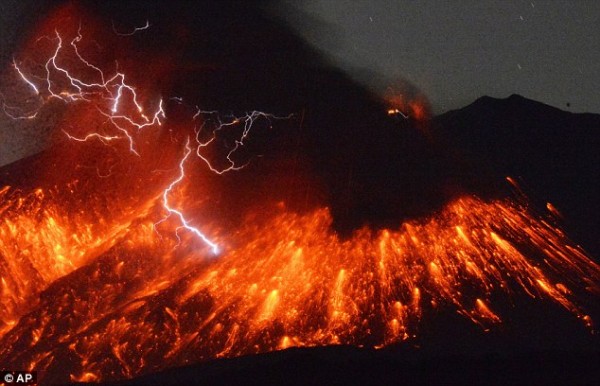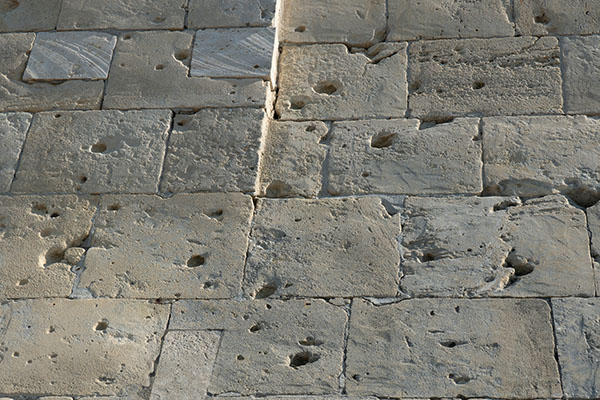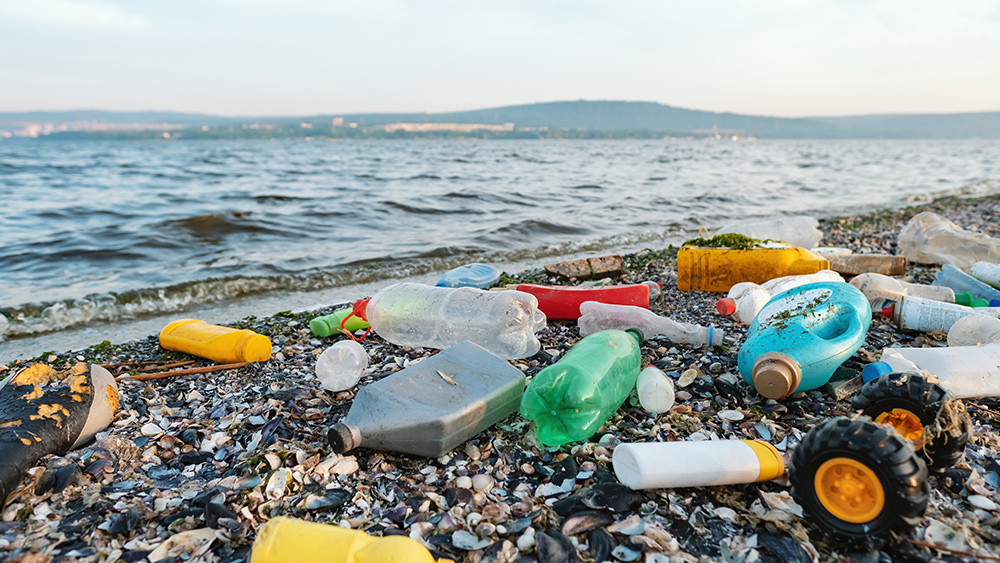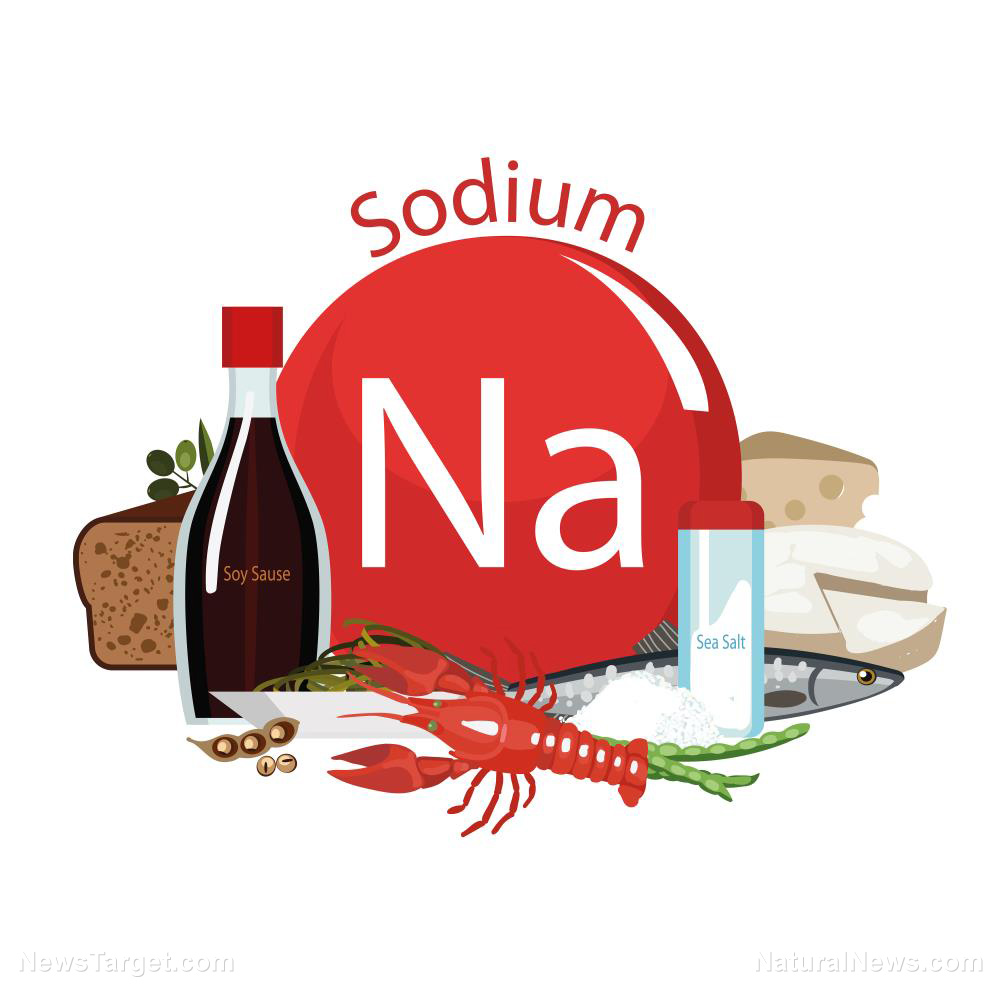USGS announces "code red" aviation warning as Hawaii's Kilauea volcano erupts
By zoeysky // 2023-06-15
Tweet
Share
Copy

The Kilauea volcano in Hawaii erupted on June 7, spewing huge flows of lava. Breathtaking feeds from the US Geological Survey (USGS) captured the eruption at the Halema'uma'u crater.
The USGS reported that lava flows are currently confined to the surrounding crater floor and that the eruption will not endanger the public. Despite the reassurance, the USGS elevated the volcano's aviation color code to red, meaning ash from Kilauea's eruption could still pose a threat to air travel.
This isn't the first time that Kilauea has erupted this year. The active volcano erupted in January, with activity stretching into March, reported the USGS.
The USGS' Hawaiian Volcano Observatory (HVO) detected a glow in Kilauea summit webcam images at 4:44 am HST (10:44 am ET) on June 7, indicating a new eruption.
Through an advisory, the USGS announced that the opening phases of Kilauea eruptions are "dynamic." The agency also cautioned that activity is confined to Halema'uma'u crater and that "the hazards will be reassessed as the eruption progresses."
Live images revealed fissures at the base of the crater generating lava flows on the crater floor's surface.
Before issuing the eruption notice, the observatory warned that the increased earthquake activity and changes in the patterns of ground deformation at the summit started on the night of June 6, suggesting the movement of magma in the subsurface.
Kilauea is located in a closed area of Hawaii Volcanoes National Park and is one of the world's most active volcanoes.
In 2018, a catastrophic Kilauea eruption destroyed over 700 homes. The following year, several earthquakes and a major eruption at Kilauea resulted in the destruction of hundreds of homes and businesses.
But prior to the major 2018 eruption, Kilauea had been erupting since 1983, and streams of lava occasionally covered farms and homes in the area. During that time, the lava from the volcano sometimes reached the ocean, causing dramatic interactions when it reached the water.
The Hawaii tourism board reported that at one time, Kilauea "produced 250,000-650,00 cubic yards of lava per day – enough to resurface a 20-mile-long, two-lane road each day."
Also called "the Big Island," the island of Hawaii is also home to the largest volcano on Earth, Mauna Loa, which makes up about 51 percent of the island and has an impressive altitude of 13,679 feet.
Mauna Loa erupted in November 2022 for the first time in 38 years.
Island officials recommend that residents prepare "go bags" with food and other survival supplies. They also advised people to find a safe place to stay if they are required to evacuate their homes after an eruption occurs.
There has been a surge of development on the Big Island in recent decades. According to data, Hawaii's population has more than doubled to 200,000 in 2023 from 92,000 in 1980. (Related: There is no correlation between CO2 and rising ocean levels, according to decades of data from NOAA.)
Emergency preparedness tips for volcanic eruptions
Volcanic eruptions may be subtle or explosive and can produce ash, dangerous lava flows, flying rocks and poisonous gases. Many volcanic eruptions are also accompanied by other natural hazards, such as debris flows, earthquakes, fires, flash floods, landslides and tsunamis. If you live near a volcano, whether it is active or dormant, you must be prepared to act immediately to protect your family.What to do before a volcanic eruption
Before a volcanic eruption, regularly review your family preparedness plan. You should also establish a family communications plan, especially if family members go to school or work in different areas. Assemble a disaster supply kit and bug-out bags for the whole family, then have a family evacuation plan in place.What to do during a volcanic eruption
If you are stuck at home during a volcanic eruption, listen to a National Oceanic and Atmospheric Administration (NOAA) weather radio or TV for updates. Be prepared to evacuate, and do so quickly if necessary. Bring your bug-out bags. Avoid areas downwind and river valleys downstream from the active volcano. Close all the windows and doors in your house, and bring pets or livestock into closed shelters if you cannot bring them with you when you evacuate. If you are outdoors, seek shelter indoors somewhere safe. Avoid low-lying areas and streams. If you are trapped in a rock fall, roll into a ball and use your arms to protect your head. Wear long-sleeved shirts and pants. If necessary, wear goggles and a mask.What to do after a volcanic eruption
After the volcanic eruption has ended, continue listening to an NOAA weather radio or TV for the latest updates. Stay inside your home until officials declare that it is safe to leave. When inspecting your home, check for damage to walls, the roof, the foundation, the electrical system and water lines. Notify your insurance company if your home was damaged during the volcanic eruption. If you are outside, avoid volcanic ashfall. Cover your nose, eyes, mouth and skin. When it's safe to do so, clear roofs of ash fall. Ash can be very heavy and cause your roofs to collapse. Avoid making phone calls except in emergencies. Visit Disaster.news for more updates on volcanic eruptions and other natural disasters. Watch the video below for a closer look at the lava stream from the recent Kilauea eruption. This video is from the SecureLife channel on Brighteon.com.More related stories:
Tonga volcano eruption produced mysterious, puzzling concentric ripples in the atmosphere. Hawaiian volcanic activity could become the catalyst that unleashes an extinction level event in the Cascadian Subduction Zone. Lava from active Hawaiian volcano threatens geothermal power plant. Sources include: DailyMail.co.uk Habitat.org Brighteon.comTweet
Share
Copy
Tagged Under:
collapse preparedness environment Hawaii national security disaster survival emergency natural disaster big government SHTF panic tips chaos ecology badpollution Kilauea volcano code red US Geological Survey Hawaiian Volcano Observatory Halemaʻumaʻu crater
You Might Also Like
New survey shows 62% of Americans believe charges against Trump are politically motivated
By Kevin Hughes // Share
THE ENEMY WITHIN: Russia loses 39 pilots and crews during coup attempt
By Belle Carter // Share
Prepper project: Bulletproofing greatly improves your home defense
By Olivia Cook // Share
Recent News
Scientists discover alternative physical communication channel for NEURONS
By ljdevon // Share
FDA faces mounting pressure as calls for black box warning on COVID vaccines intensify
By patricklewis // Share
Sleep naturally, live consciously: The modern appeal of hemp bedding
By hrseditor // Share
How SODIUM sustains the body and the delicate balance modern diets disrupt
By avagrace // Share











